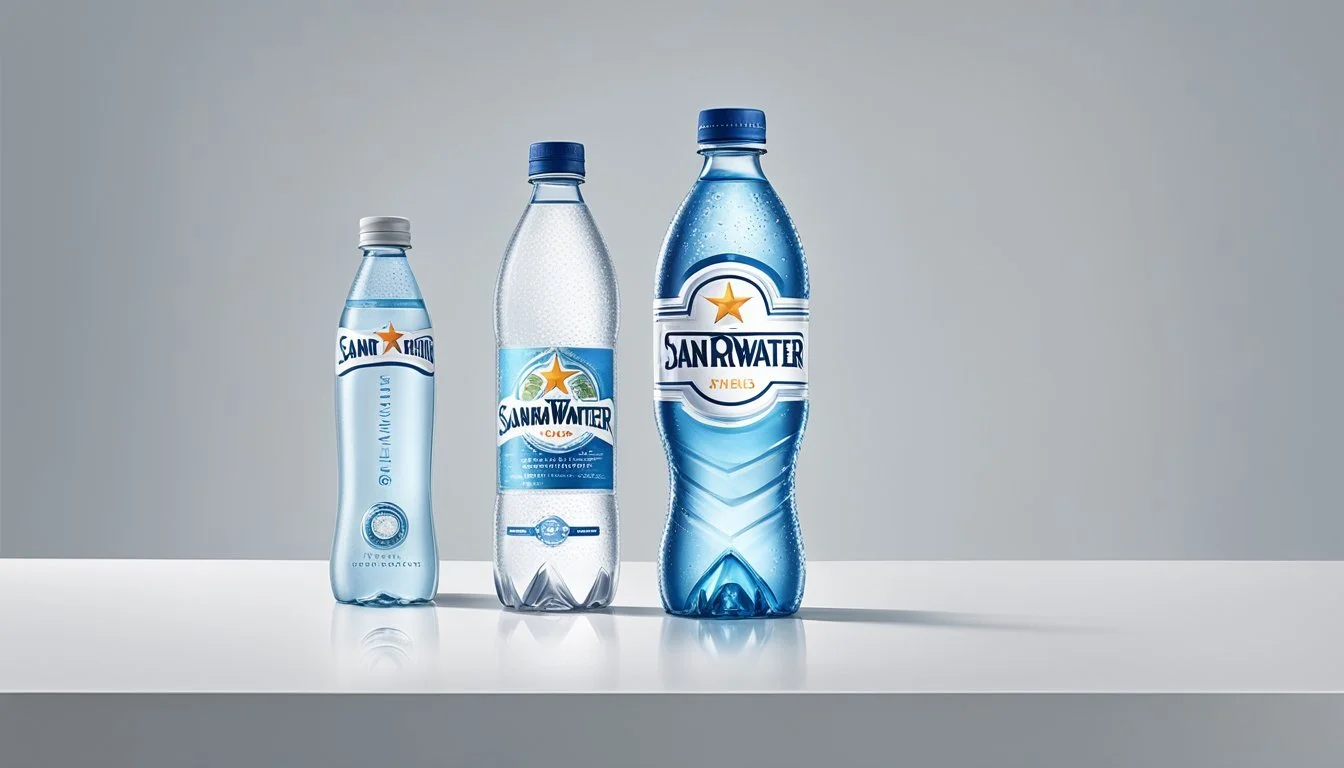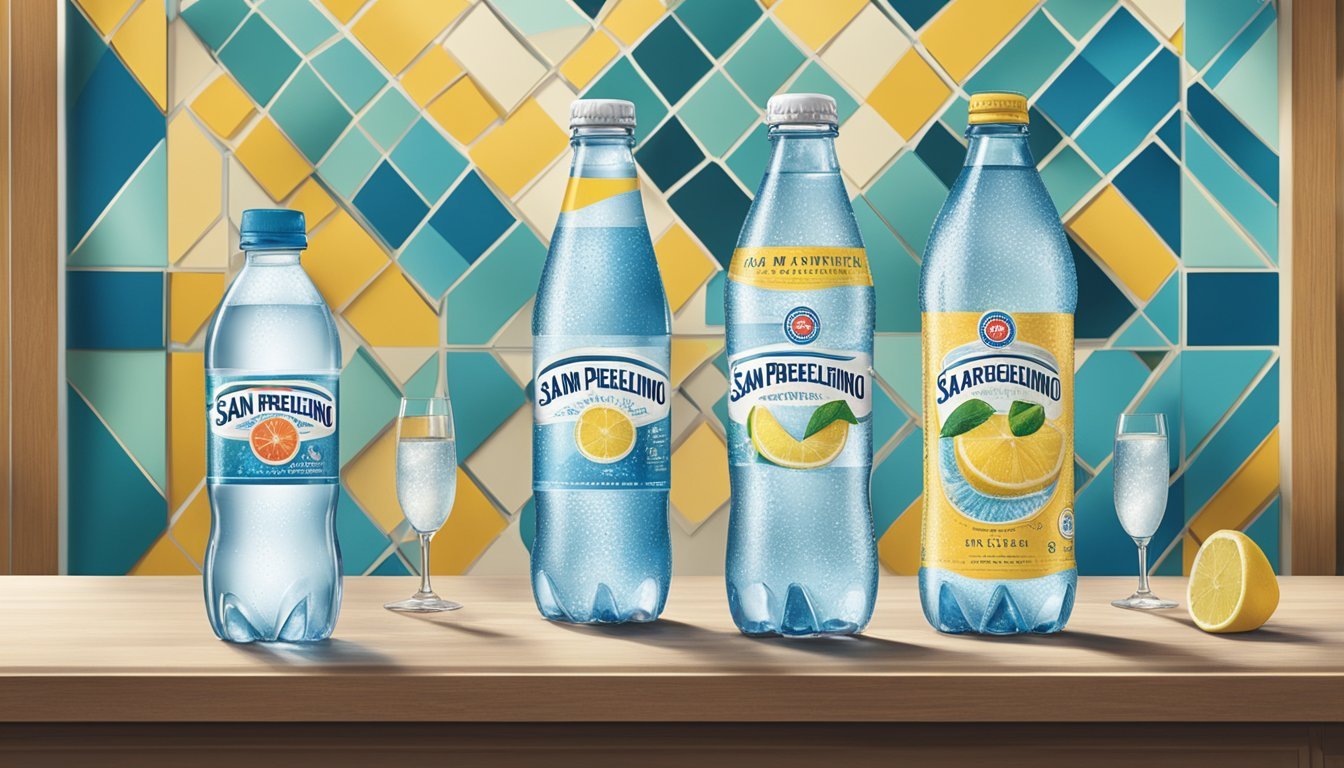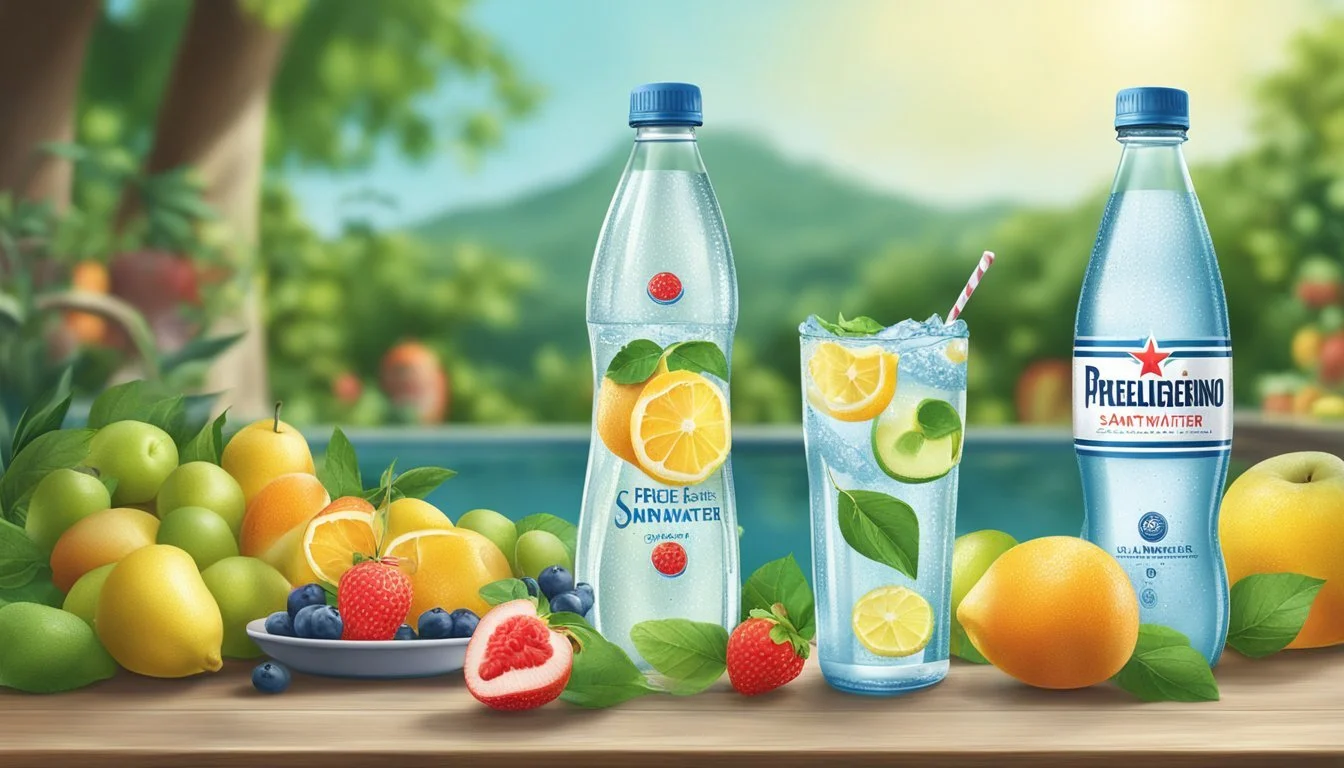San Pellegrino vs. Smartwater
An Unbiased Comparison of Bottled Waters
Bottled water has become a staple in the daily lives of many, offering convenience and, in some cases, a taste that is considered superior to tap water. Two prominent brands that often come up in discussions around high-quality bottled water are San Pellegrino and Smartwater. While San Pellegrino is known for its Italian origin and naturally effervescent mineral water, Smartwater prides itself on a vapor-distilled product with added electrolytes for taste.
The choice between these two brands isn't simply a matter of flat versus sparkling. Consumers make selections based on taste profiles, health benefits, source authenticity, and environmental impact. San Pellegrino sources its water from the springs near the Italian Alps, infusing it with a unique blend of minerals and added carbonation, offering a distinct, slightly bitter taste. On the other hand, Smartwater undergoes a distillation process, claiming purity and enhanced hydration through added electrolytes.
As bottled water consumption continues to grow, the question of which brand offers a better product becomes increasingly complex. It is not just about the presence of minerals or the method of purification, but also about branding, the environmental footprint of production and packaging, and personal preference for taste and mouthfeel. This article intends to provide a comprehensive comparison of San Pellegrino and Smartwater, helping consumers make an informed choice based on these factors.
Overview of Bottled Water Brands
The bottled water industry offers a range of choices, from sparkling mineral options to purified drinking water enriched with electrolytes. This section provides an insightful examination of two distinguished brands, San Pellegrino and Smartwater, amidst their competitors, while also touching on regulatory standards that ensure safety and quality.
San Pellegrino's Profile
San Pellegrino is an Italian brand known for its premium sparkling mineral water. Sourced from the Italian Alps, it is rich in minerals and has a distinct taste that distinguishes it from other water brands. The brand's offerings are often associated with fine dining and have a global presence.
Smartwater's Profile
Smartwater, produced by the Coca-Cola Company, is a brand of purified water. It undergoes a reverse osmosis process and is enhanced with a blend of electrolytes for taste. Unlike San Pellegrino's sparkling profile, Smartwater is known for its crisp and clean taste, positioned as a premium drinking water brand.
Competing Brands in the Market
The bottled water market features a variety of brands such as Perrier, Aquafina, Evian, Poland Spring, Dasani, VOSS, Fiji Water, and La Croix. Companies differentiate themselves through the source of water, whether mineral, spring, or purified, and also through packaging and marketing strategies.
Perrier: Similar to San Pellegrino, offers sparkling mineral water with a bold taste.
Aquafina: Known for its purified drinking water, devoid of minerals and electrolytes.
Evian: Spring water that originates from the French Alps, favorited for its mineral content and taste.
Fiji Water: Sourced from an artesian aquifer in Fiji, has a high mineral content, and a sleek bottle design.
Bottled Water Regulations and Standards
In the United States, bottled water must comply with regulatory standards set by the Food and Drug Administration (FDA) and the Environmental Protection Agency (EPA). The FDA monitors and ensures that bottled water products are safe and properly labeled. The EPA sets standards for tap water, which indirectly influences bottled water that originates from public sources. Standards regulate various aspects like total dissolved solids (TDS) and the presence of contaminants to ensure clean drinking water.
FDA: Enforces standards for bottled water quality, including limits on contaminants.
EPA: Regulates tap water, which affects bottlers using public water sources, ensuring safe drinking water.
Health and Hydration
Analyzing the health benefits and hydration effectiveness of San Pellegrino compared to Smartwater requires a focus on specific variables. Key considerations include the importance of hydration, electrolyte and mineral content, potential contaminants, and the health implications of different pH levels in drinking water.
Importance of Hydration
Hydration is crucial for maintaining overall health. The human body depends on water to function properly, as it aids in digestion, absorption, circulation, and excretion. Drinking water, such as San Pellegrino or Smartwater, helps replenish fluids lost through metabolism, breathing, sweating, and the removal of waste.
Electrolytes and Mineral Content
San Pellegrino:
Minerals: Contains calcium, magnesium, and bicarbonate
Electrolytes: Naturally occurring from the source
Smartwater:
Electrolytes: Added for taste; includes calcium chloride, magnesium chloride, and potassium bicarbonate
Minerals and electrolytes are essential for body function, assisting in hydration, muscle function, and nerve signaling. San Pellegrino boasts a higher mineral content, sourced from the springs it is drawn from, whereas Smartwater has added electrolytes primarily to enhance taste.
Safety and Contaminants
Both San Pellegrino and Smartwater undergo strict safety protocols to ensure the water is free from harmful contaminants. San Pellegrino is a mineral water sourced from springs and undergoes natural filtration through limestone. In contrast, Smartwater uses vapor distillation, mimicking the hydrologic cycle, to remove impurities.
Contaminants check:
Microplastics: Present in most bottled waters
Chemicals: Absence of harmful levels of chlorine or other potentially hazardous chemicals is typically ensured by both brands
Effects of pH Levels on Health
The pH level of water is a measure of its acidity or alkalinity. A neutral pH is 7, while higher values indicate alkalinity.
San Pellegrino: Typically has a pH close to neutral, which mirrors the body's natural pH.
Smartwater: Offers a pH of 7.4, which is slightly alkaline and can be smoother on the palette.
Some proponents of alkaline water, with higher pH levels like Smartwater's pH of 9.5, suggest it can provide health benefits, such as neutralizing acid in the bloodstream. However, empirical research supporting these claims is limited, and water with a neutral pH is generally suitable for maintaining hydration and health.
Thus, when considering San Pellegrino and Smartwater for health and hydration, one must weigh the benefits of natural mineral content and the preferability of source-based electrolytes against the scientifically backed safety and gentle alkalinity provided by vapor-distilled Smartwater.
Environmental Impact
Choosing between San Pellegrino and Smartwater involves considering their impact on the environment. Both brands contribute to sustainability challenges and carbon emissions, which are critical to evaluating their environmental footprint.
Bottled Water and Sustainability
The production and disposal of bottled water by brands such as San Pellegrino and Smartwater raise concerns about sustainability. The environmental impact stems from the materials used and the end-of-life handling of the product. San Pellegrino uses both glass and plastic bottles, with the latter raising questions about recyclability. They have made efforts to provide information regarding the quality of their water and the recyclability of their bottles. Modern consumers are also showing interest in bottles that are made from plant-based materials, which tend to have a lower environmental impact compared to traditional plastic.
Recyclability: Plastic bottles, if not recycled properly, contribute significantly to environmental pollution. San Pellegrino's plastic bottles are recyclable, yet it depends on the efficiency and reach of local recycling systems.
Materials: Companies are gradually adopting plant-based bottles, which promise a reduced environmental footprint. However, detailed information about Smartwater's approach to such materials is not specified in the provided data.
Carbon Footprint of Bottled Water Production
The carbon footprint of bottled water production for both San Pellegrino and Smartwater is a culmination of various factors, primarily the extraction and processing of raw materials, manufacturing of the bottles, and transportation.
Carbon Dioxide (CO2) Emissions: Each stage of the bottled water lifecycle emits carbon dioxide (CO2), a greenhouse gas contributing to climate change. The energy required for the production process often involves the burning of fossil fuels, which adds to the CO2 emissions.
Transportation: The transportation of bottled water from source to consumer is another significant contributor to the overall carbon footprint. The further the distance the water travels, the higher the carbon emissions.
Taste and Aesthetic Appeal
In comparing San Pellegrino and Smartwater, one will find distinctive differences in their taste profiles and the sensory experience each brand offers.
Flavor Profiles and Variety
San Pellegrino is known for its earthy and slightly bitter taste derived from the minerals in the water. The brand's mineral profile includes salts and added CO2, which contribute to this unique flavor, often celebrated for pairing well with food. On the other hand, Smartwater is vapor-distilled and includes added electrolytes for taste. It offers a clean, crisp taste and is often preferred by those seeking a more neutral-flavored hydration.
Flavored Sparkling Water: San Pellegrino has expanded its offerings to include fruit-flavored sparkling waters, integrating a variety of fruit essences without overpowering the mineral water's signature taste. Smartwater does not provide flavored mineral water options but has ventured into the flavored seltzer market.
Carbonation and Texture
Carbonation: The bubbles in San Pellegrino are described as smooth and plentiful, making for a fizzy experience that many people enjoy. The water is naturally carbonated, adding to the sophistication of its texture. In contrast, Smartwater, mainly known as a still water, presents a flat texture but has introduced a sparkling version, offering a lighter carbonation compared to San Pellegrino.
Texture: The difference in carbonation levels between the two brands impacts the mouthfeel of the water. San Pellegrino's intense effervescence provides a sharp, invigorating sensation, while the gentler sparkle in Sparkling Smartwater may be more approachable for those who find San Pellegrino’s fizz to be too pronounced.
Cultural and Market Influences
The battle between San Pellegrino and Smartwater reflects divergent cultural trends and market demands. Consumers' palates and the way that bottled water is represented in popular media significantly inform their purchasing choices.
Consumer Preferences
Preferences vary widely among individuals, with some favoring the mineral taste and effervescence of San Pellegrino, an Italian mineral water with a history of satisfying consumers seeking a premium dining experience. Others opt for the purified simplicity and added electrolytes that Smartwater provides, which caters to health-conscious demographics prioritizing hydration and a crisp taste profile.
Bottled Water in Popular Culture
Bottled water brands have gained visibility through their association with celebrities and appearances in media. Artists and influencers often gravitate towards trendy brands, such as San Pellegrino, due to their status symbols in upscale settings. Conversely, brands like Smartwater have utilized creative advertising campaigns featuring notable figures, capitalizing on their clean image to appeal to a broad audience focused on wellness and lifestyle.
Water Sommelier Insights
The role of the water sommelier has emerged to educate consumers on the nuances of water, much like their wine counterparts. They shed light on the subtleties between bottled waters, often highlighting the unique terroir of San Pellegrino's sources compared to the technological purification of Smartwater. These experts influence the market by steering demand toward higher-end waters in culinary circles where the source and composition of water are given careful consideration.
Practical Considerations
In choosing between San Pellegrino and Smartwater, consumers consider factors such as price, convenience, and packaging. These practical elements often weigh as heavily as taste and health benefits when making a purchase decision.
Pricing Comparison
San Pellegrino is generally priced higher due to its import status and positioning as a premium mineral water. Customers can expect to pay more per bottle compared to Smartwater, which, while still marketed as a higher-end product, is usually more affordable and manufactured domestically in the United States. The price for each brand varies depending on the retailer and the quantity purchased, but San Pellegrino's price is typically reflective of its specialty and imported nature.
Availability and Accessibility
Smartwater is widely available in a variety of retail settings across the United States, from convenience stores to supermarkets. Its availability is boosted by being a product of The Coca-Cola Company, which has an extensive distribution network. San Pellegrino, sourced from Italy and known for its mineral content, may not be as immediately accessible in every retail environment but is commonly found in grocery stores and specialty food shops.
Packaging and Storage
Both brands offer different packaging options which impact storage and recyclability. Smartwater is often found in plastic bottles which are lighter and more durable for transportation; these bottles are recyclable, aligning with consumer demand for environmentally-friendly packaging. San Pellegrino traditionally comes in glass bottles, which many consumers find aesthetically pleasing and associate with higher quality, although glass is heavier and might be more prone to breakage. Both brands' packaging is designed to ensure the preservation of the water's taste and quality, without the need for preservatives.
Conclusion
When comparing San Pellegrino and Smartwater, consumers have distinct options geared toward different preferences.
San Pellegrino is characterized by its natural mineral content and its strong reputation in the bottled water market. It is often sold in glass bottles, which may appeal to those concerned about the environmental impact and taste retention.
On the other hand, Smartwater is marketed for its purity, having been vapor-distilled with added electrolytes for taste enhancement. While Smartwater is typically found in plastic bottles, which raises environmental concerns, its production process mimics the natural hydrologic cycle.
In terms of health implications, San Pellegrino's mineral-rich profile could offer slight nutritional benefits over Smartwater, which contains only trace amounts of minerals.
Ultimately, the decision rests on personal values such as environmental impact, health benefits, and taste preference. San Pellegrino may attract those who prioritize mineral content and packaging, whereas Smartwater might be preferred by those valuing the brand's unique distillation process and electrolyte-enhanced taste.
In conclusion, neither brand is markedly superior; instead, they cater to different niches within the bottled water market. Consumers are encouraged to consider these factors when making their choice.





